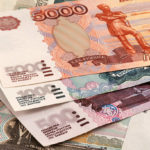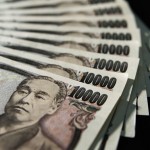The euro traded steadily and in proximity to its highest point in eight months against the US dollar on Monday, as expectations mounted that the Federal Reserve Bank may postpone the reduction of monetary stimulus after the partial government shutdown.
EUR/USD touched a session high at 1.3688 during the early phase of Asian trade, after which consolidation followed at 1.3673, dipping 0.09% for the day. Support was likely to be found at October 18th low, 1.3660, while resistance was to be met at October 18th high and also an eight-month high, 1.3703.
Following the 16-day partial government shutdown in the United States, the US dollar remained still under pressure amid concerns that Feds monetary policy will be strongly influenced. The Federal Reserve Bank will probably put off the first cut to its asset-purchasing program until March, according to the median estimate of 40 experts participated in a survey by Bloomberg, conducted on October 17th-18th. Survey results a month ago showed that the first cut of stimulus would occur in December this year. Such projections came after the experienced 16-day partial shutdown in the United States. Federal Reserve policymakers had pledged that since December a raise in the base interest rate would not be considered as long as the unemployment rate in the country exceeds 6.5%. The rate of unemployment remained at 7.3% in September, according to the median estimate in another poll. The US Labor Department will release its official report on October 22nd. This report has been initially scheduled for release on October 4th, as well as the highly anticipated non-farm payrolls.
Later in the day, the United States will show data on existing home sales. Expectations pointed a 3.3% decrease to annual 5.30 million units in September, after the reported 5.48 million units in August. Higher than projected sales will certainly heighten the appeal of the greenback.
Meanwhile, earlier on Monday it became clear that the German index of producer prices (PPI) rose in September compared to August due to higher prices of energy for heating purposes and diesel. The input producer prices still remained considerably below the levels, recorded a year ago. The PPI rose 0.3% in September on a monthly basis, above the expected 0.1% gain. The annual performance of the index showed a 0.5% drop in September, while preliminary estimates pointed a larger drop, 0.7%. Lower producer price inflation in the country covers to some extent the formidable increase in prices of consumer goods. Food prices climbed 2.7% in September 2013 compared to September 2012, with prices of butter up 32.1% and prices of milk soaring 18.2%. Wine prices also registered higher levels in September, 7.5%.
Elsewhere, the euro was losing ground against the sterling, with EUR/GBP cross down 0.17% to trade at 0.8453 at 8:23 GMT. EUR/JPY pair, on the other hand, was gaining 0.15% on a daily basis to trade at 134.12 at 8:23 GMT.





